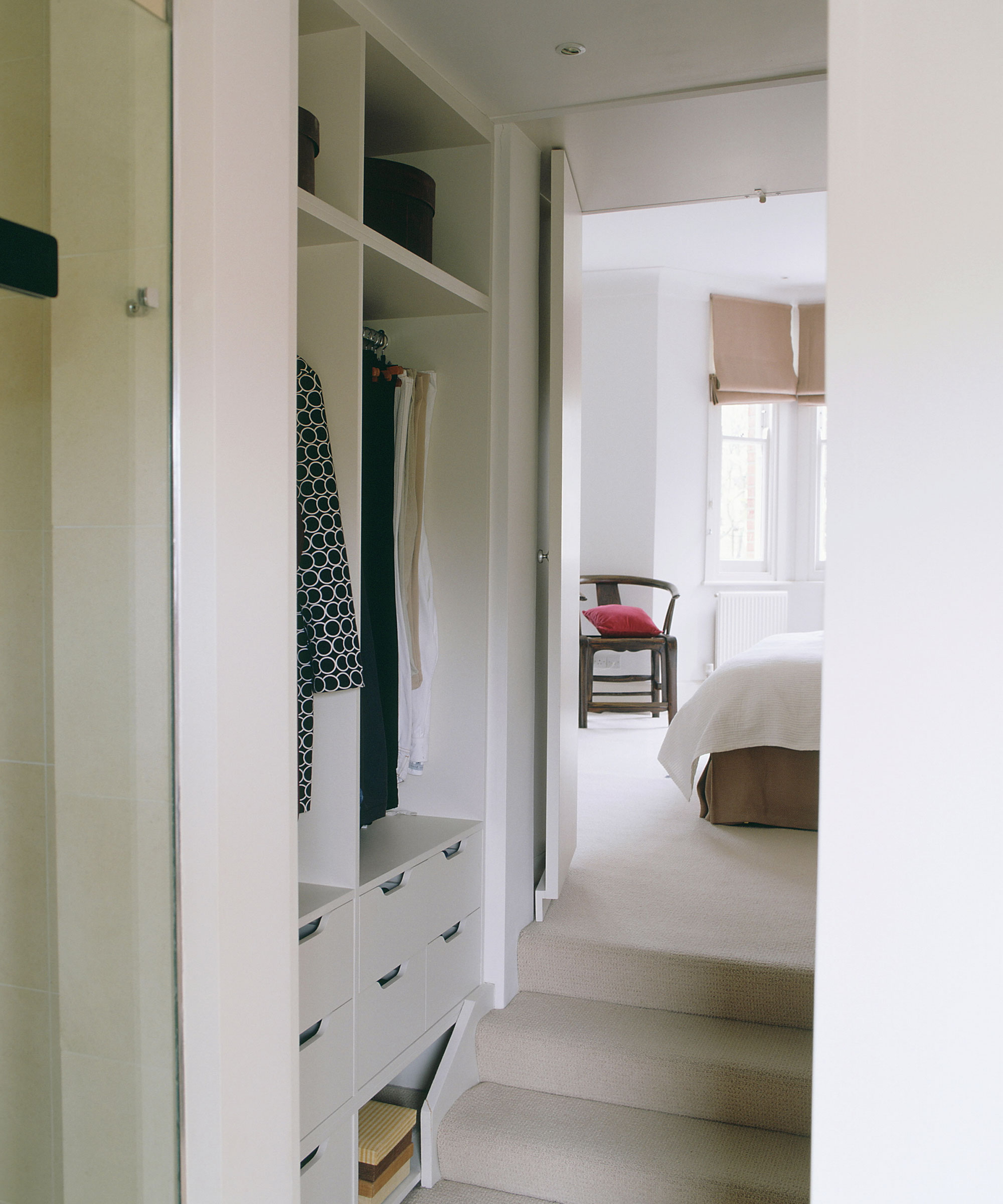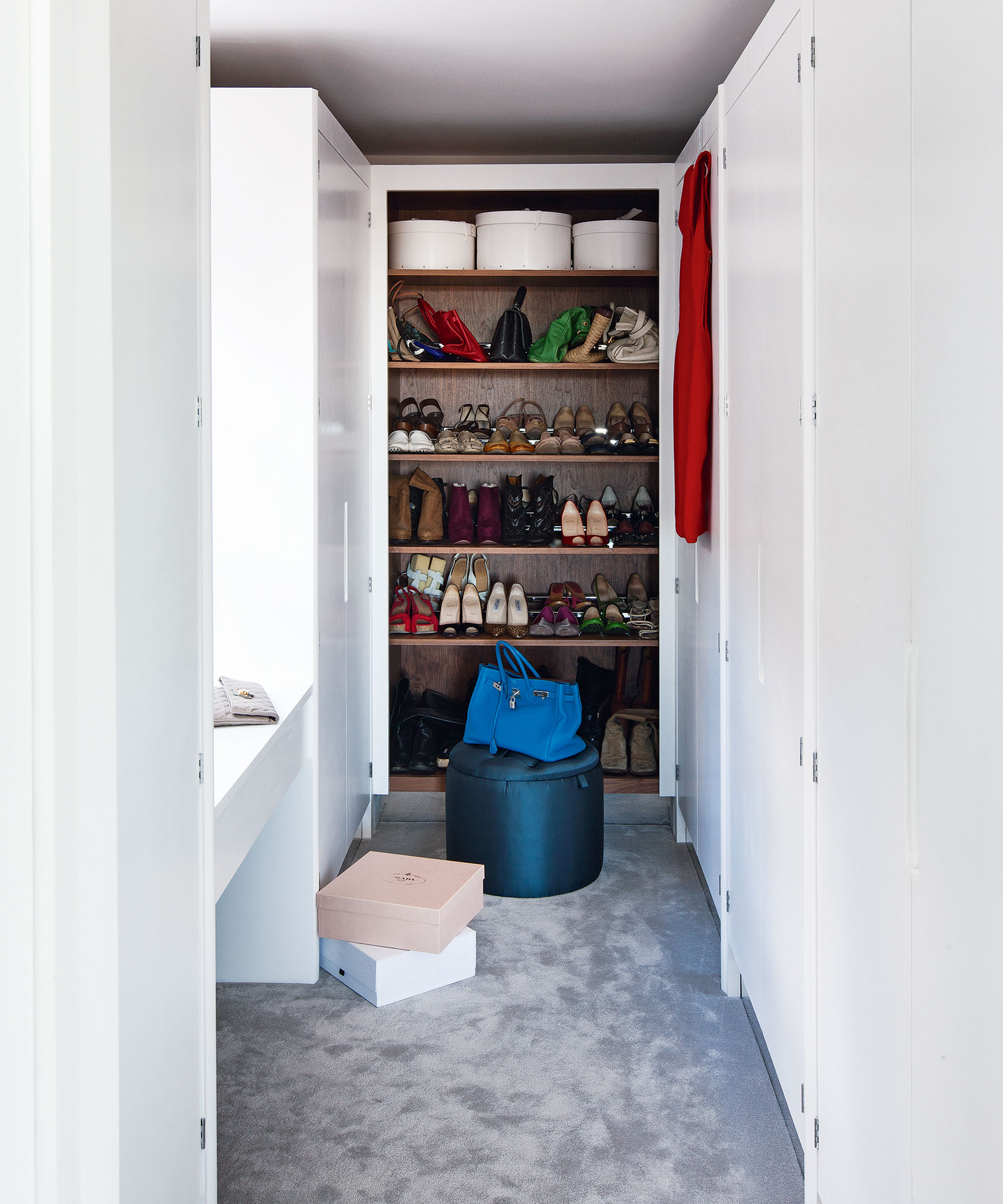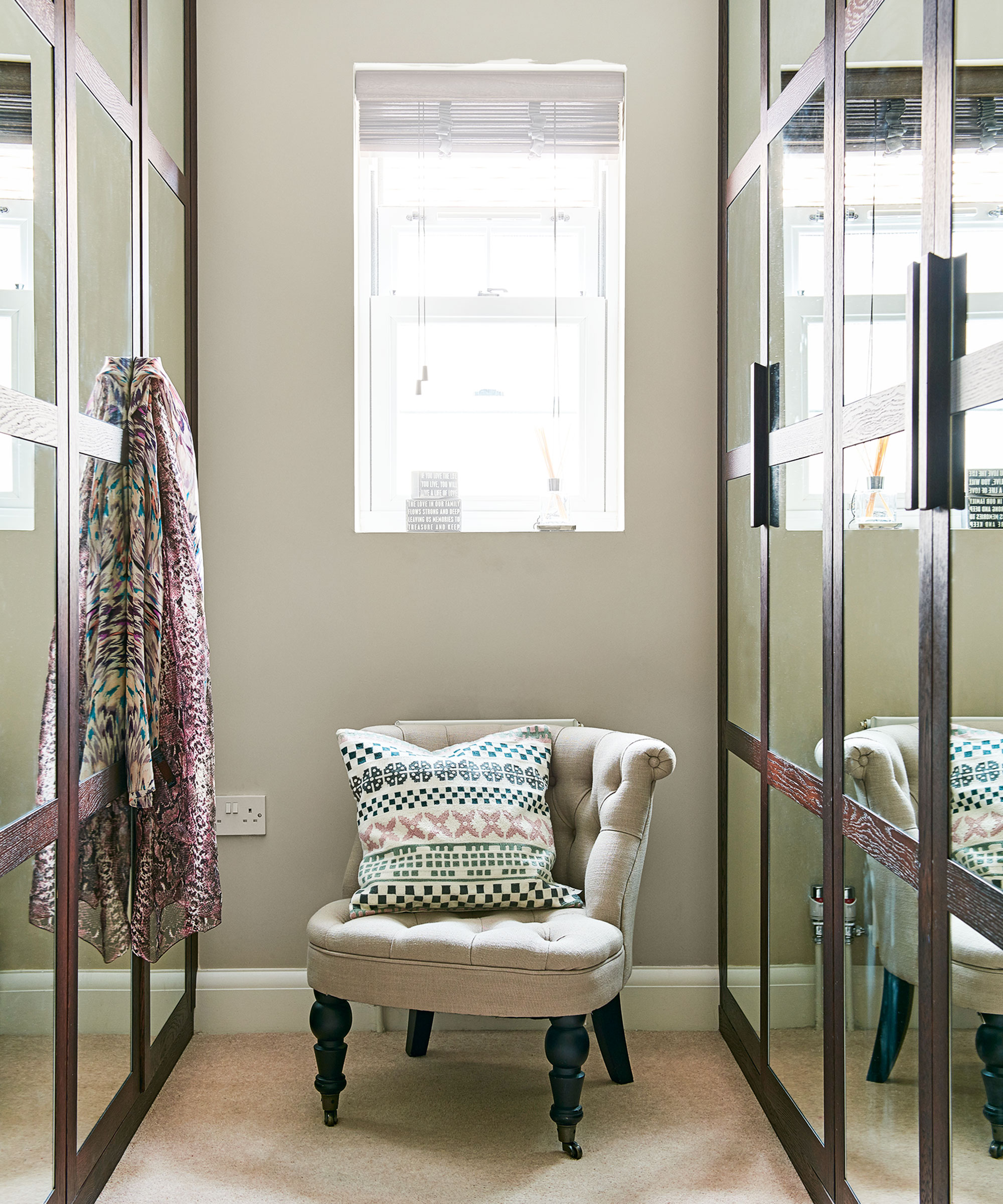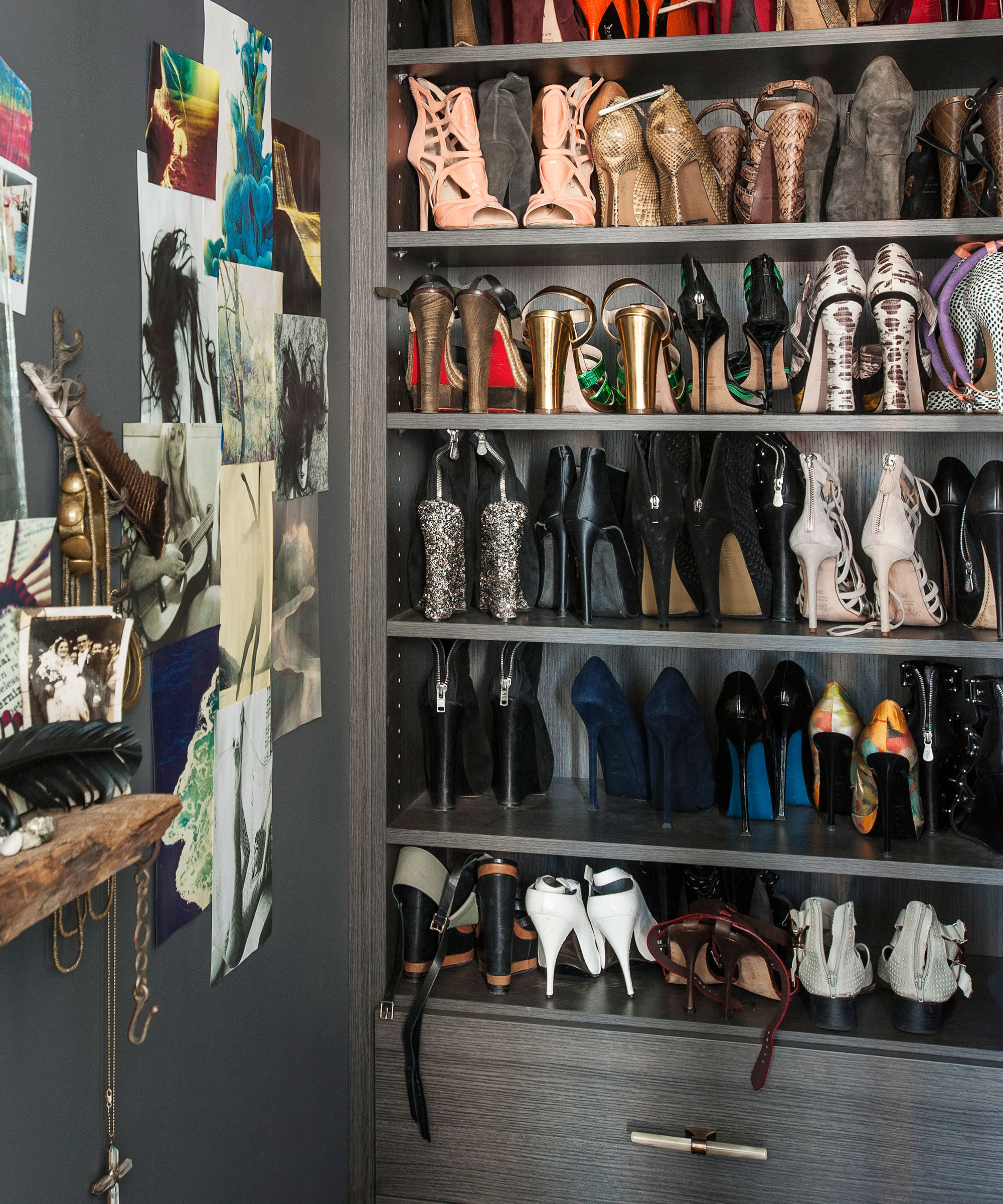9 things you need to know about creating the perfect walk-in closet
Essential info to bear in mind before embarking on a walk-in wardrobe project


Whether you love labels and have a closet to die for, or even if you just like to keep your clothes stored neatly, a walk in closet is a covetable addition to any home.
With careful space planning and a little forethought, getting one that's the envy of Carrie Bradshaw is easier than you might think. So before you start browsing walk-in closet ideas, here are 9 top tips you need to know.
Design a walk in closet
Whether you are looking for closet organization ideas, dressing room ideas or just some neat bedroom storage ideas, designing a walk-in closet needs careful planning. Below, we take you through the basics, step by step.
1. Space is everywhere

Consider stealing some inches from the footprint of an existing room – space under eaves can be sectioned off for example, with drawers against the short wall and hanging space against the new full height partition.
Or if you're extending your home to incorporate a new bedroom or bathroom, plan the layout a little more carefully and include some clever storage space too. Thinking ahead can save time, money, and help you make best use of the space.
2. Prioritize hanging

You can always put an extra set of drawers in the bedroom but you can't hang your clothes there. Separate short and long garments and measure how many feet of hanging space you need for each, then add 20% more.
An average 7ft ceiling height will allow for two rows of short hanging, one above the other, or one row or long hanging with shelves or drawers underneath.
Design expertise in your inbox – from inspiring decorating ideas and beautiful celebrity homes to practical gardening advice and shopping round-ups.
3. Make use of redundant space

Shelves above hanging rails or doors can be used to accommodate less frequently used items (hat boxes, say) and a set of closed cupboards will protect more expensive garments from dust.
Install a set at the end of a long walk in closet, and use mirrored doors to maximize the feeling of space.
4. News on shoes

Shoe storage ideas need to be designed to suit the shoes you're storing. Shoe bars only work with heeled footwear, so instead choose flat shelves and see through plastic boxes, which are great for stacking and locating the right shoes at a glance.
Alternatively, attach Polaroids of the shoes inside to the outside of existing shoe boxes, ready for easy identification.
5. Consider clever fittings

Smart solutions can include a pull out ‘shoe larder' (similar to those found in kitchens). These can stow multiple pairs in a narrow space, and mean shoes are stored separately.
6. Don't forget lighting

Well-planned closet lighting ideas shouldn't cost more than 20 per cent of the budget. LEDs give the best light for viewing garments, and spot lights can be adjusted.
7. Close things off

Pocket doors or sliding doors won't encroach on the storage space, and consider underfloor heating that ensures that valuable wall space remains free.
8. Think modular or fitted

Look at modular systems or get a bespoke interior built. Budget from £500 per linear m for open storage with a melamine finish up to £1200 per linear m for full wardrobes with doors.
9. Top drawers

Drawers are more expensive than shelves, so folding and stacking garments such as jumpers can help to maximize your budget.

Amy Cutmore is Editor-in-Chief, Audience, across Future's Homes portfolio. A homes and interiors journalist of 20 years standing, she has spent much of that time writing about technology, appliances and kitchens. While other people count how many countries they've visited, Amy tots up how many countries' washing machine factories she's toured (it's eight by the way, from South Korea to Slovenia). She can't leave the house without a decent pair of noise-cancelling headphones, and is always ready to explain an acronym – be it QLED, DAB or HDMI.